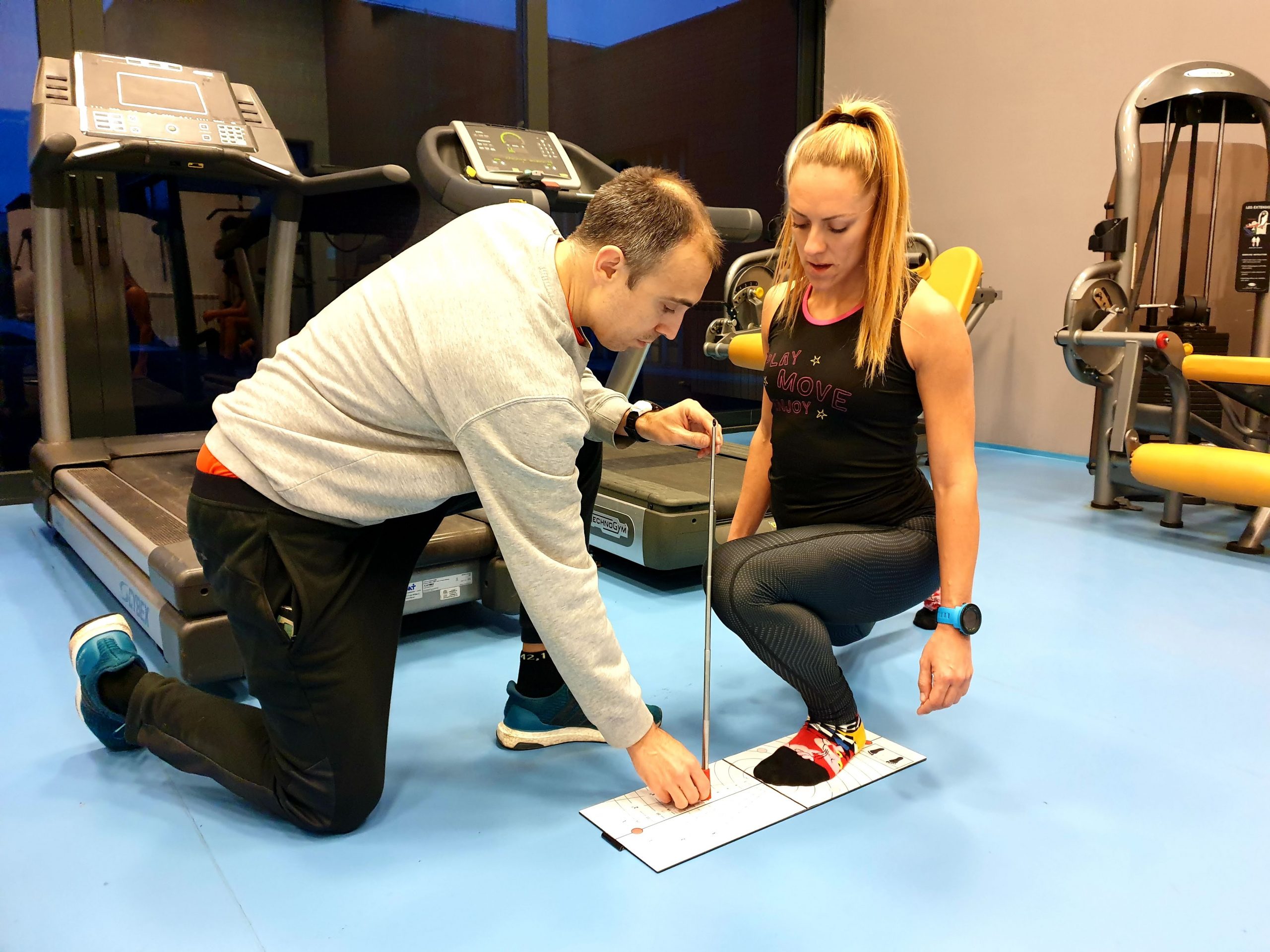Arduua tests for Trail running, Skyrunning and Ultra-trail
We fully believe that to improve something, first you have to measure it and know where it starts. In our Online Coaching program, we always perform certain tests on the runners to ensure that you are in the right ranges of motion, stability, balance and strength.
These tests will give us specific information of mobility, balance and strength to be trained during your training programme in order to create the best conditions for an efficient running technique.
From this 360º vision of the athlete, we can establish an effective training plan that allows us to improve all their capabilities and work specifically on the skills and abilities of their objective careers.
In the end of this article you can find a video that summarizes the tests.
The importance of mobility
The relationship in the flexibility of the athlete and the risk of injuries is something that you as a coach always have to consider.
Even though within scientific literature there are dissenting results in many studies that conclude that greater flexibility does not provide a lower risk of injury, there are also studies which says that the athlete must present some minimum values of flexibility to be within a safe mobility range.
Most of the muscle ratings that Fernando made last year on athletes who came with injuries, sometimes chronic, reflected important muscles with excessive tension, that were located in some key joints for running, outside the safe range. Those shortenings where generating a cropped mobility that overburdened its muscle system with unwanted compensations. In the end they were athletes with limitations and that presented an inadequate running pattern in all its phases.
Obviously, these athletes do need to stretch, not only to gain flexibility but also to keep it once obtained these profits.
Mobility required for Skyrunning
Mobility required is also depending on the sport that you do practise. The recommended mobility of a Skyrunner should be such that it allows the Skyrunner to take advantage of more efficient angles while running on all types of mountain terrains. Therefore, we strive to get the running step as efficient as possible and to be able to work in a natural movement pattern, which also decreases the risk of injury.
A complete Skyrunner should have adequate mobility in several muscle groups and should, for example, be able to:
- Absorb and compensate for uneven ground during running.
- Be able to pass ground obstacles smoothly without having to lift the centre of gravity unnecessarily high.
- Mobility required for steep uphill and downhill running.
- Have adequate mobility throughout the movement, so that any stiffness does not cause unnecessary load/damage on exposed places and thereby increase the risk of injury.
When you perform the tests, please try to record a video for all tyhe tests. Make sure that the video includes all the body, and try to make the same views in the video as those we discuss in each test.
Mobility tests
Ankle mobility test
Why it is important in running to be mobile in this area?
If you do not have enough movement in your ankle (mainly in dorsal flexion), you may have health problems relational with fasciitis plantar, over pronation as well as limitations in your landing and impulsion capacity. Moreover, it may affect to the correct execution of some usual strength exercises like squats.
What is an adequate mobility?
It is important that the knee can advance at least 10 cm in front of the toes without lifting your heel. It is also important to have similar mobility degrees in both ankles.
How do I do the test?
Resting on the floor on one knee and the other foot forward. In front of a wall, with barefoot.
Try to touch the wall with the front part of your knee without lifting your heel from the floor. Keep in mind that the most important point of the test is not to lift your heel off the ground when touching the wall with your knee.
Then, measure the distance between your toe to the wall.
Do this process with both legs.
Record a video or take a picture from each leg. Do it in a lateral view including toe, knee in the wall and the measuring tape.
An acceptable level is that you have at least 10 cm between toe and wall.
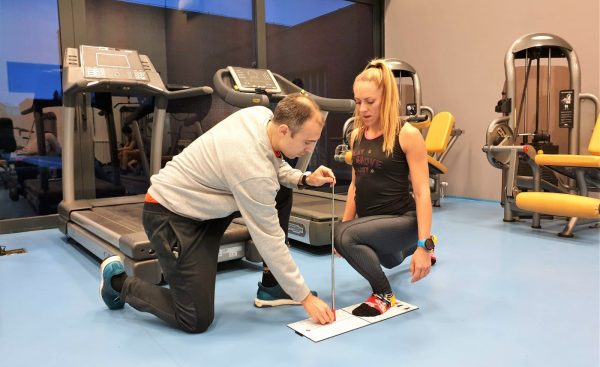
Ankle mobility test
How many centimetres do you have between knee and toe?
Squat position test
Can you do this barefoot?
How do I do the test?
Squat position with barefoot.
Try to go down the most you can, keeping in mind you can´t lift your heel from the floor.
Record a video or take a picture with a front and a lateral view.
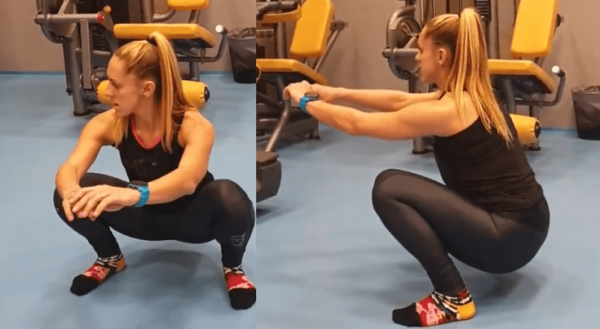
Thomas test for hip extension
Why it is important in running to be mobile in this area?
It is important to obtain an efficient running technique with the best hip mobility angles.
What is an adequate mobility?
This test is used to check if we have some muscles shortenings that may affect to a correct hip mobility in forward direction. We check rectus femoral and psoas iliaco muscles.
How do I do the test?
Lay face up at the edge of a bench with your legs hanging. The borning of the glutes must be on the edge of the bench.
Now, with the help of your hands lift one leg and approach the knee to your chest.
Do it in both sides with both legs.
Record video o take a picture in a lateral view and also in front of the foot of the extended leg. Note that is necessary that all the extended leg from the foot to the hip, must appear in the picture or video. Video must include both legs.
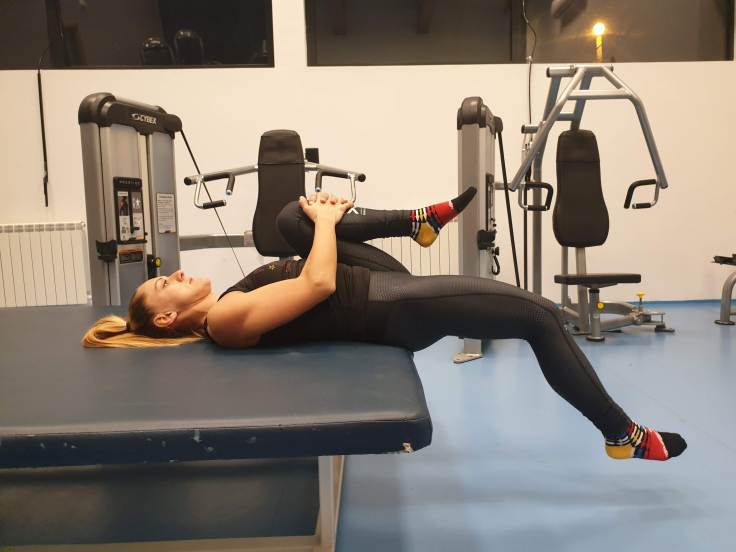
Thomas test for hip extension
Can you do this like picture 1?
Active leg raising test (Hamstrings)
Why it is important in running to be mobile in this area?
A Range of reduced movement here are relational with some injuries caused by heavier loads supported by the knee, as well as lumbar pain.
What is an adequate mobility?
Reference values are between 71 and 91 degrees.
How do I do the test?
Lying face up, rise your leg and push it as far as you can keeping the leg straight as showed in the drawing.
Try not to lift your glutes from the floor and hold your knee extended.
Record a video o take a picture (in this case with the foot in the higher position), in lateral view of both legs.
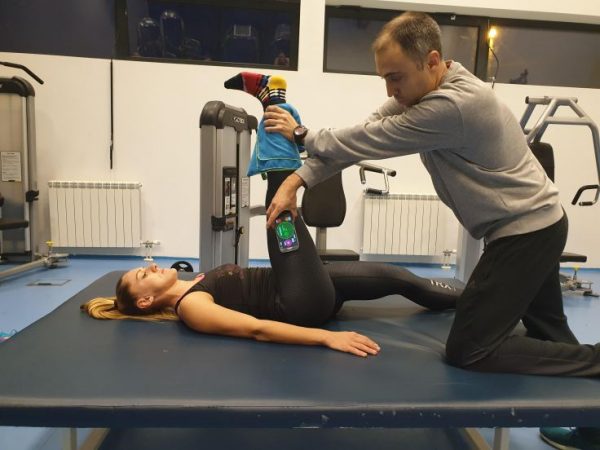
If you lift up your leg without support. How many degrees do you have?
Nachlas test (Quadriceps)
Why it is important in running to be mobile in this area?
It is important to obtain an efficient running technique for non-supporting leg during its running pattern.
What is an adequate mobility?
To reach a good mobility, you must be able to touch your glutes with your heel as shown in the picture.
Can you do this heel touching glutes?
How do I do the test?
Lay face down on the floor and simply fold your leg and try to approach your heel to your glutes as close as possible grabbing the ankle with the same hand as the leg.
Repeat with the other leg.
Record a video o take a picture in lateral view of both legs. Include some comments if you felt any pain in the low back or front hip.
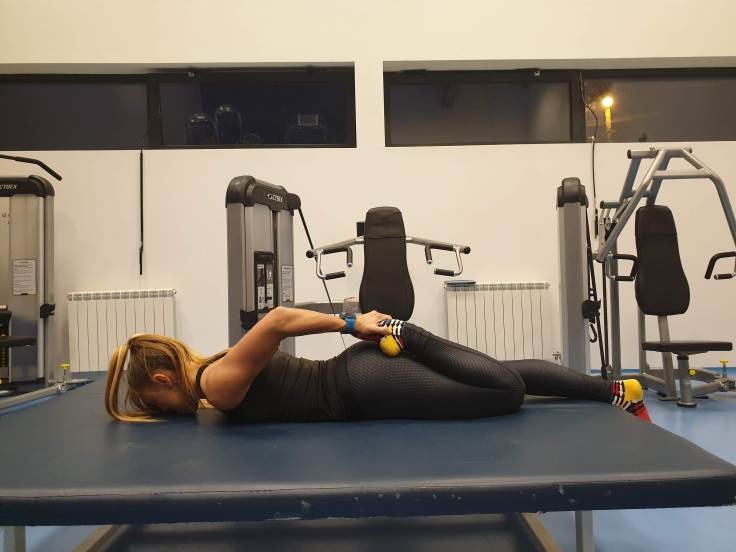
Stability and balance tests
Why it is important in running to be mobile in this area?
In these types of tests, we want to check the knee stability while doing different movements with just one leg supporting the body (Natural behaviour when running).
What is an adequate stability/mobility?
The lack of knee alignments ability may be responsible of injuries like problems with iliotibial bands, patellas tendonitis or patellofemoral syndrome. During this exercises or tests, the most important is not getting a value. The most important feedback is about how is your movement and how you keep moving along the test.
In these types of test, we have to check the way of execution in different unipodal exercises. Test like lunges execution, touching the floor with….. or Ybalance test,… are use for this proposal.
How do I do the test?
There are many different tests to check the quality of your movement with just one supporting leg. The main ones I usually used with my athletes are Y-balance test, touching the floor with the opposite hand to the leg supported, or just lunges execution. These exercises are also adequate to train balance skills. Something really important for trail and skyrunning.
Touching the floor with the opposite hand test
Can you this without wobbling?
How do I do the test?
Start from a standing position.
Perform a hip flexion of one of the legs, lowering the chest (keeping the back straight without arching it), and leaving the other leg extended in line with the trunk.
At the same time, we extend the same arm of the raised leg, trying to touch the floor with our fingers.
Keep in mind that the most important thing about this test is that all the body weight falls on the folded leg.
Try to hold the position like this for 5 seconds without wobbling.
Repeat with the other leg.
Record a video with a front view of both legs.
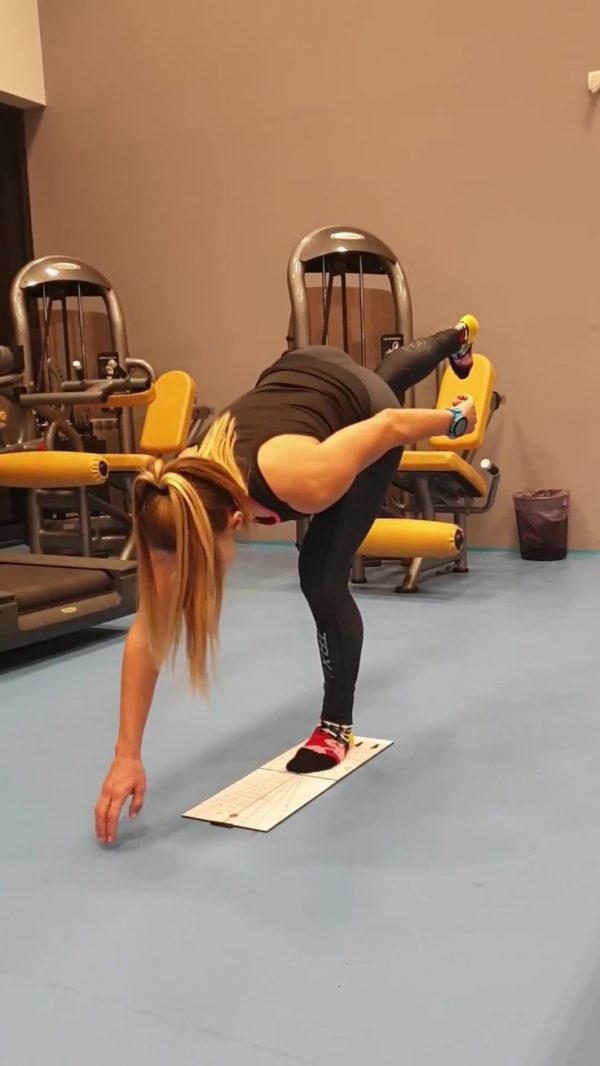
Stability and alignment knee-hip-ankle test
Can you this without wobbling?
How do I do the test?
Starting from a standing position.
Fold one knee lowering the body keeping the back straight without arching it.
While, stretching the other leg in front of us, trying to bring the big toe of that leg as far as possible.
Try to hold the position like this for 5 seconds without wobbling.
Keep in mind that the most important thing about this test is that all the body weight falls on the folded leg.
Repeat with the opposite leg.
Record a video in a front view with both legs.
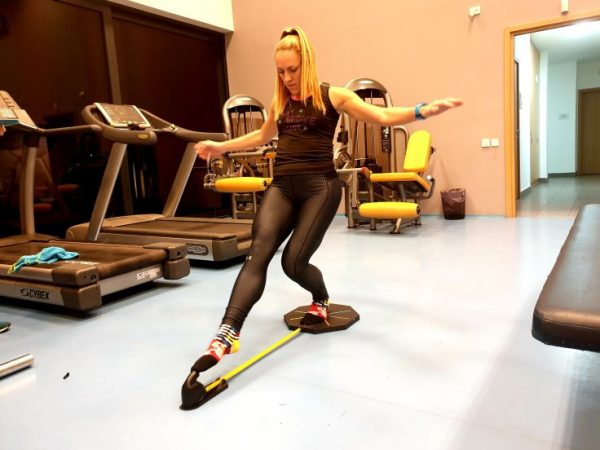
Y-balance test
Can you this without wobbling?
How do I do the test?
Starting from a standing position.
Fold one knee lowering the body and tilt the chest forward, keeping the back straight without arching it.
1.- While, stretching the other leg backwards us, trying to bring the big toe the leg as far as possible crossing this leg behind the supporting one.
Try to hold the position like this for 5 seconds without wobbling.
2.- Repeat again. But this time stretching the other leg backwards us, trying to bring the big toe the leg as far as possible without crossing this leg behind the supporting one.
Try to hold the position like this for 5 seconds without wobbling.
Keep in mind that the most important thing about this test is that all the body weight falls on the folded leg.
Repeat with the opposite leg.
Record a video in a front view with both legs doing point 1 and 2.
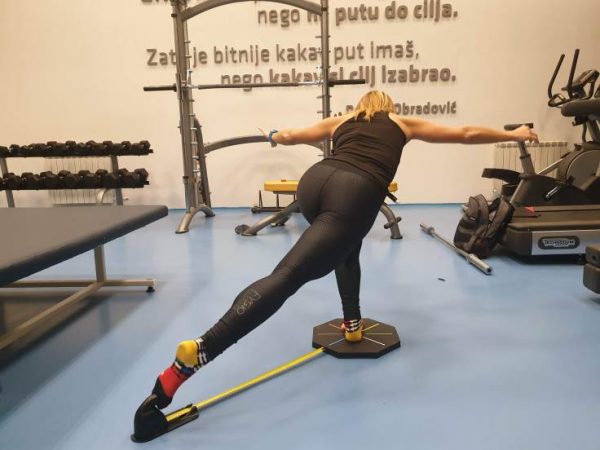
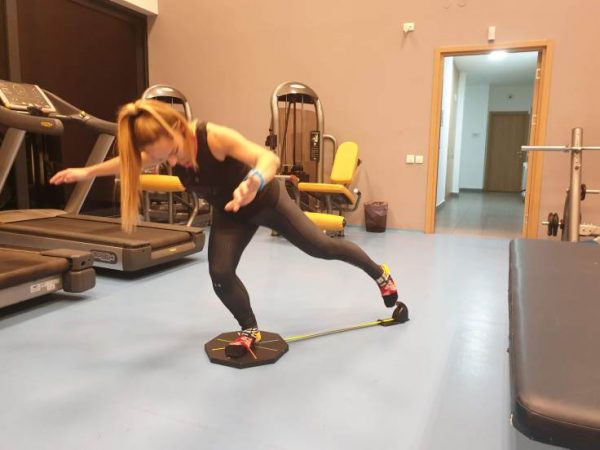
Can you this without wobbling?
One leg balance test
Can you keep this position as Figure 11 with both feet > 30 seconds?
And with your eyes closed?
How do I do the test?
1.- Eyes open.
Stand with eyes open, looking forward and with your hands on your hips.
Raise one knee to hip height and hold it there for at least 30 seconds.
Do it again with the other leg.
Record a video in a front view with both legs.
Please note that the head must also appear in the video.
2.- Eyes closed.
Stand with eyes closed, looking forward and with your hands on your hips.
Raise one knee to hip height and hold it there for at least 30 seconds.
Do it again with the other leg.
Record a video in a front view with both legs.
Please note that the head must also appear in the video.
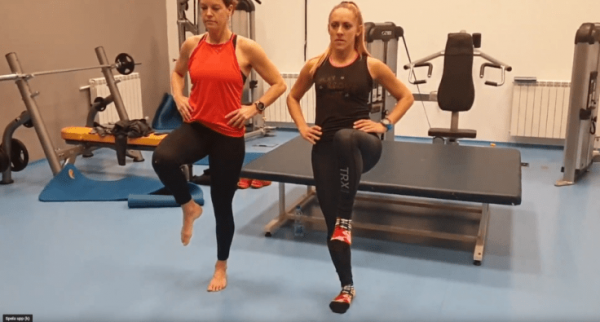
Strength tests
Frontal plank test
How many seconds can you can keep the position without tremors?
How do I do the test?
How many seconds can you can keep the position without tremors?
Record a video in a lateral view.
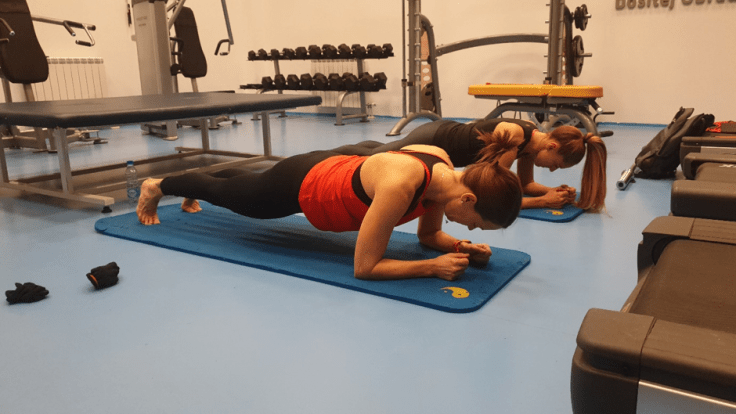
Lateral plank test
How many seconds can you can keep the position without tremors?
How do I do the test?
How many seconds can you can keep the position without tremors?
Record a video in a lateral view for both sides.
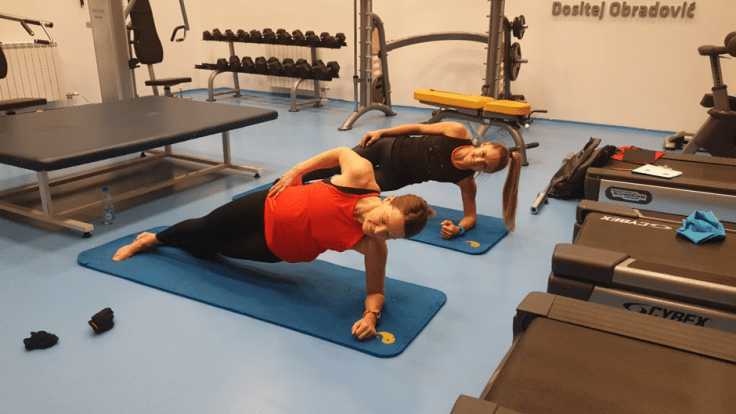
Glutes strength test
How do I do the test?
Lying face up, raise your hips as much as possible.
Extend one leg in line with the trunk, keeping the hip elevated as much as possible with the leg folded.
Hold the position for 15-20 seconds.
Comment if you feel pain in your lower back, or at the base of your glutes or hamstrings.
Repeat with the other leg.
Record a video in a lateral view for each leg.
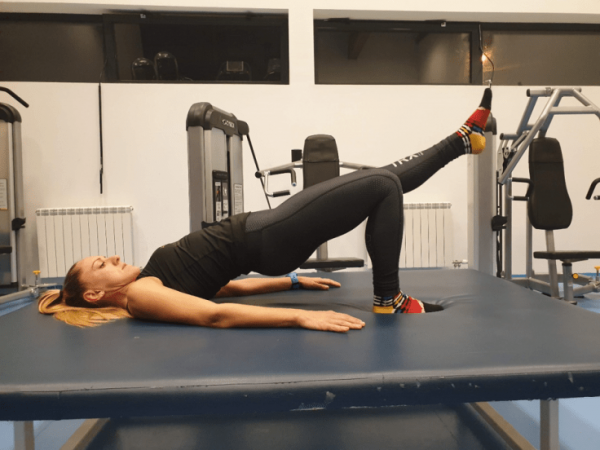
Walking lunges test
Can you this without wobbling?
How do I do the test?
Walk with long strides, lowering your hips until the front leg forms a 90º angle between the tibia and femur.
Try to take at least 3 or 4 strides per leg.
Record a front view video that includes strides toward the camera and back to the starting point.
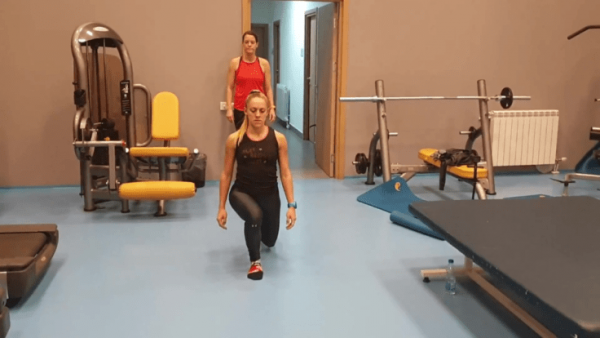
Squat high jump test
Can you start in the position of bent knees, keeping the static position 3 seconds before jumping as high as you can with the hands in the hips?
How do I do the test?
Position with knees bent, feet slightly wider than hip-width apart and hands on hips.
Maintain the position for 3 seconds before jumping and try to reach with your head as high as possible.
Record a front view video.
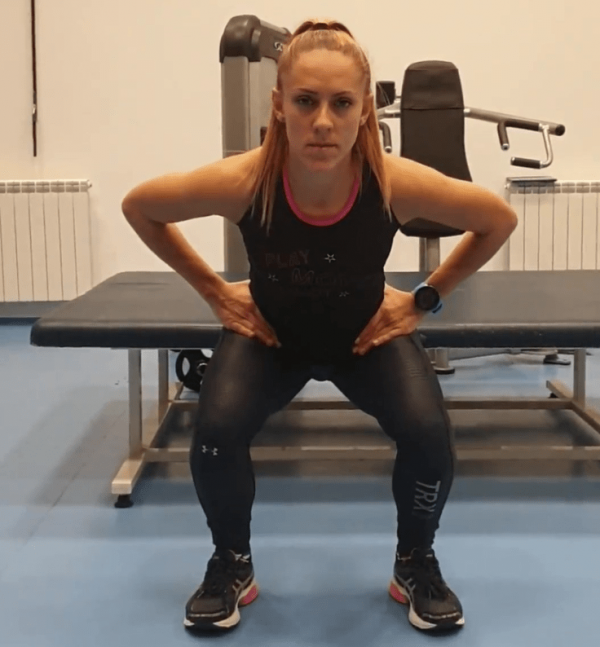
Counter movement jump test
Can you do almost the same move as the same as high squat jump test, but starting stand doing a fast squat to take impulsion and jumping higher?
How do I do the test?
In standing position.
Try to jump as much as possible, bringing your head as high as possible, passing through the squat position from the previous test.
Record a front view video.
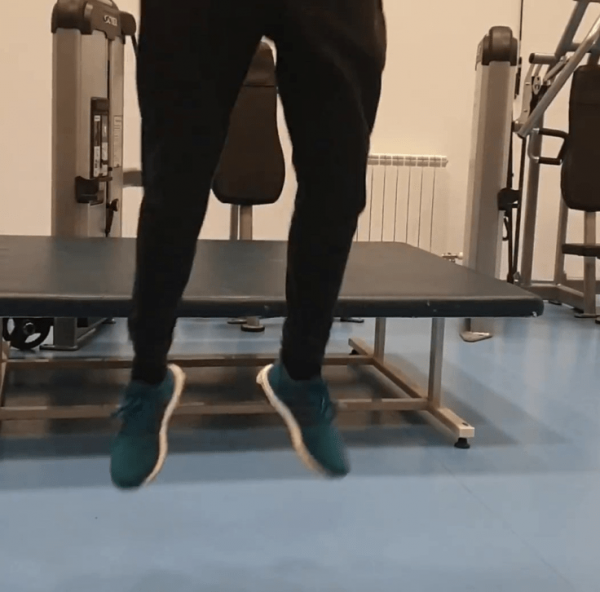
Squat strength test
How heavy can you do 10 squats without reaching maximum fatigue? (in extra kg’s)? (Indicate a load that you could lift 3 or 4 more repetitions). You can leave this test for the end of the upstart test to avoid fatigue before the jumps.
How do I do the test?
How heavy can you do 10 squats without reaching maximum fatigue? (in extra kg’s)? (Indicate a load that you could lift 3 or 4 more repetitions).
Leave this test for the end of the upstart test to avoid fatigue before the jumps.
Comment the load you have been able to move in kg.
Record a front view video.
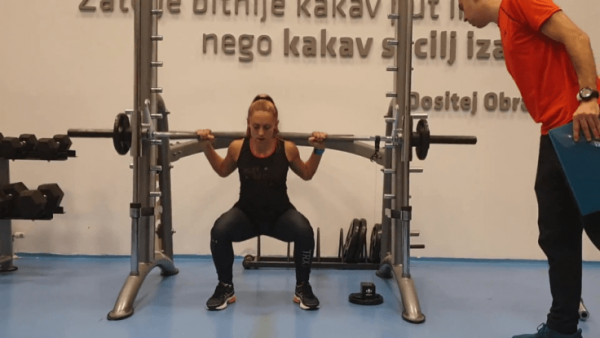
All the start-up tests in one video
Other muscle shortenings or weaknesses
If you are aware of any other muscle shortenings or weaknesses in strength, of course we have to take that into consideration also.
How to do the tests
You do all the tests described above by videocam yourself and answer all the questions and send it to your Skyrunning Coach for analyse. If you don’t have a coach, we will be glad to help you!
Let us help you with your training
If you need any help with your training or have any questions, please check out Arduua Online Coaching Plans, or send an e-mail to katinka.nyberg@arduua.com.
Support pages
How to: use Trainingpeaks with your coach


